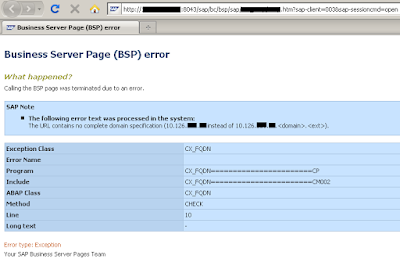wikipedia of sap
SAP R/3
From Wikipedia, the free encyclopedia
SAP R/3 is the former name of the main enterprise resource planning software produced by SAP AG. It is an enterprise-wide information system designed to coordinate all the resources, information, and activities needed to complete business processes such as order fulfillment or billing.[1] Contents[hide] |
[edit] History of SAP R/3
The first version of SAP's flagship enterprise software was a financial Accounting system named R/1 called as YSR. This was replaced by R/2 at the end of the 1970s. SAP R/2 was in a mainframe based business application software suite that was very successful in the 1980s and early 1990s. It was particularly popular with large multinational European companies who required soft-real-time business applications, with multi-currency and multi-language capabilities built in. With the advent of distributed client–server computing SAP AG brought out a client–server version of the software called SAP R/3 (The "R" was for "Real-time data processing" and 3 was for 3-tier). This new architecture is compatible with multiple platforms and operating systems, such as Microsoft Windows or UNIX. This opened up SAP to a whole new customer base.SAP R/3 was officially launched on 6 July 1992. It was renamed SAP ERP and later again renamed ECC (ERP Central Component). SAP came to dominate the large business applications market over the next 10 years. SAP ECC 5.0 ERP is the successor of SAP R/3 4.70. The newest version of the suite is SAP ECC 6.0.
[edit] Releases
- SAP R/3 Release 1.0A Release Date 6 July 1992
- SAP R/3 Release 2.0 / 2.1 Released 1993
- SAP R/3 Release 3.0 / 3.1 Released 1995
- SAP R/3 Release 4.0B Release Date June 1998
- SAP R/3 Release 4.5B Release Date March 1999
- SAP R/3 Release 4.6A Release Date 1999
- SAP R/3 Release 4.6B Release Date Dec 1999
- SAP R/3 Release 4.6C Release Date April 2001
- SAP R/3 Enterprise Release 4.70 Release Date March- Dec 2003[2]
- SAP R/3 Enterprise Edition 4.7
- SAP R/3 Enterprise Central Component 5.0
- SAP R/3 Enterprise Central Component 6.0
[edit] Organization
SAP R/3 was arranged into distinct functional modules, covering the typical functions in place in an organization. The most widely used modules were Financial s and Controlling (FICO), Human Resources (HR), Materials Management (MM), Sales & Distribution (SD), and Production Planning (PP)[citation needed].Each module handled specific business tasks on its own, but was linked to the others where applicable. For instance, an invoice from the billing transaction of Sales & Distribution would pass through to accounting, where it will appear in accounts receivable and cost of goods sold.
SAP typically focused on best practice methodologies for driving its software processes, but more recently expanded into vertical markets. In these situations, SAP produced specialized modules (referred to as IS or Industry Specific) geared toward a particular market segment, such as utilities or retail.
[edit] Technology
SAP based the architecture of R/3 on a three-tier client/server - Good Server Bad Server and Normal Server - By Ranjeet / Ashish and Raj Kumar (3 tired consultatns)- Presentation Server-good server(GUI)
- Application Server
- Database Server
[edit] Application Server
An application server is a collection of executables that collectively interpret the ABAP/4 (Advanced Business Application Programming / 4th Generation) programs and manage the input and output for them. When an application server is started, these executables all start at the same time. When an application server is stopped, they all shut down together. The number of processes that start up when you bring up the application server is defined in a single configuration file called the application server profile. Each application server has a profile that specifies its characteristics when it starts up and while it is running. For example, an application server profile specifies:- Number of processes and their types
- Amount of memory each process may use
- Length of time a user is inactive before being automatically logged off.
The application server exists to interpret ABAP/4 programs, and they only run there-the programs do not run on the presentation server. An ABAP/4 program can start an executable on the presentation server, but an AB

Comments
Post a Comment